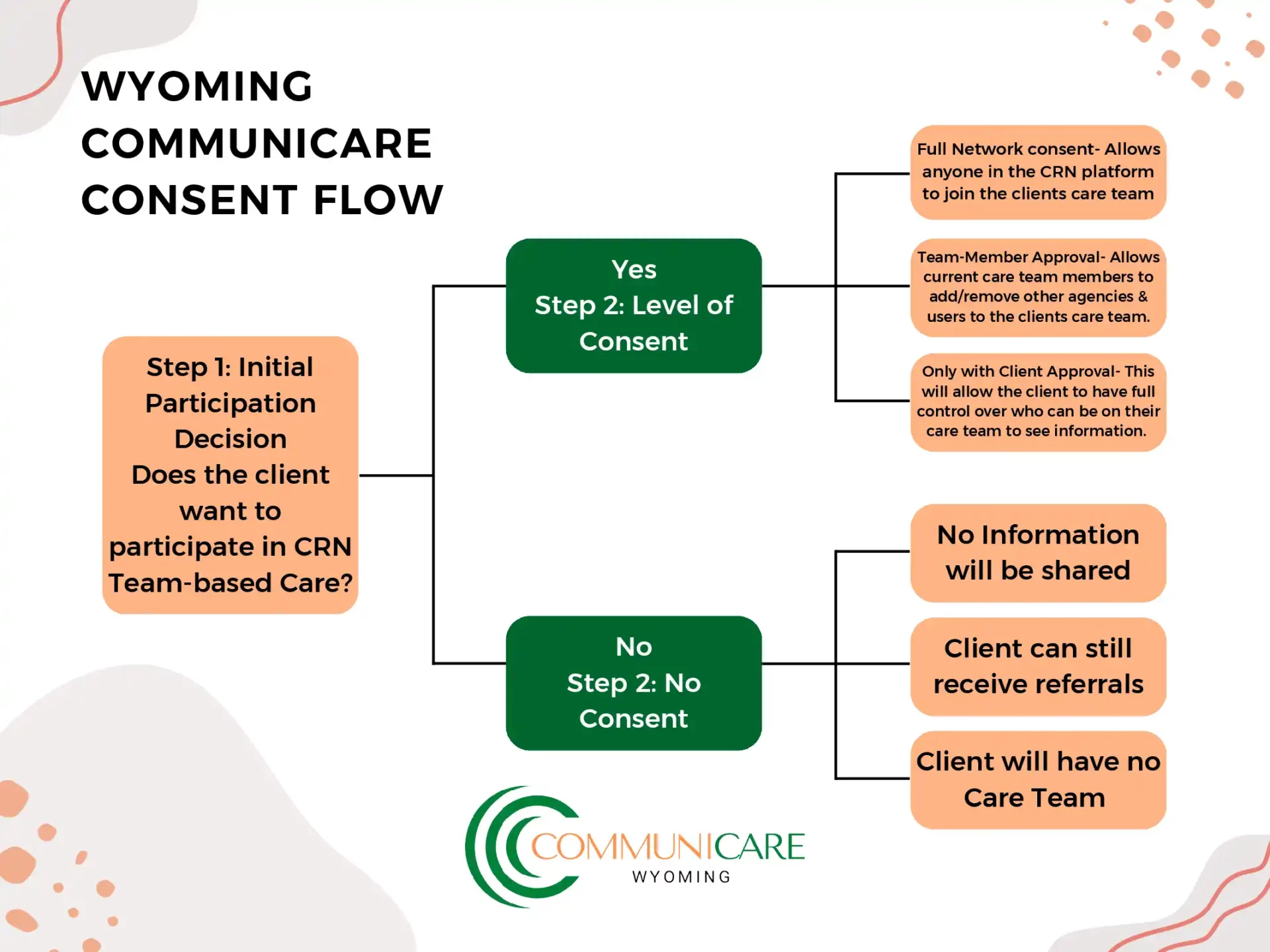This flowchart provides a clear visual guide to help clients understand their options when deciding whether to participate in Team-based Care. It begins with an initial decision point: whether the client wishes to engage in team-based care or not.

The Informed Consent Process
The Informed Consent process is a dialog rather than a mere formality with a form put in front of a client with little to no explanation as to what it really means. Frequently the client is in a vulnerable state and is likely to sign whatever is put in front of them in order to get their needs met. We ask the CRN network partners to commit to creating time in their process to ensure that they understand their clients’ circumstances and needs as well as ensuring that the client understands the following:
1.) Purpose: Consenting to share data in CRN allows those in the community working with the client to communicate and share data on their behalf to better serve them in areas of need. Sharing their information will make receiving services faster and easier, as well as keeping all Care Team members up to date on relevant events, reducing duplication (screenings, referrals, etc.), and connects them to all the support and benefits that are available across the entire community.
2.) Role the Client Has in Making This Decision: It’s important that the client understands that they do not have to consent to data sharing to have services provided. However, if they would like their community providers to be able to share data and coordinate care, they have the ability to choose the method of consent that works for them (full, team-member, client based, or none). They can, at any time, change their method of consent by reaching out to any of their Care Team members.
Benefits/Risks: Talk with the client to understand their circumstances and discuss the benefits and risks of sharing information between providers. Example: Are there any providers with whom they are not comfortable sharing data?
Alternatives/Options: If the client does not want data sharing between partners in CRN, the client’s case manager will still use the resource directory, case management tools, and other referral tools.
Client “Teach Back” / Open Ended Questions
Asking open-ended questions that provide an opportunity for the client to articulate their understanding of what they are consenting to allows the provider to identify gaps in understanding and fill in as needed. Examples: “Why do you think it will be beneficial to you to have your providers sharing information?” (this will help identify if the client understands the purpose of sharing information between providers); “Do you have concerns about any specific information being shared” (this will help identify if the client understands what information is shared and what is not).
Client Consent Explanation
Having clear documentation to take home allows the client time to review and process as needed. This also allows the client to provide information to significant supports in their life.
- Staff members of the partner agencies who will see my information have signed agreements to maintain confidentiality regarding my information.
- The release of my information does not guarantee that I will receive assistance; my refusal to authorize the sharing of my information does not disqualify me from receiving assistance.
- My records may be protected by federal, state, and local regulations governing confidentiality of client records.
- This authorization will remain in effect until revoked or for two years
- I may revoke the authorization at any time. If I revoke my authorization, all information about me prior to this date in CommuniCare will remain.
- I have the right to view the client confidentiality policies signed by partners who have access to CommuniCare